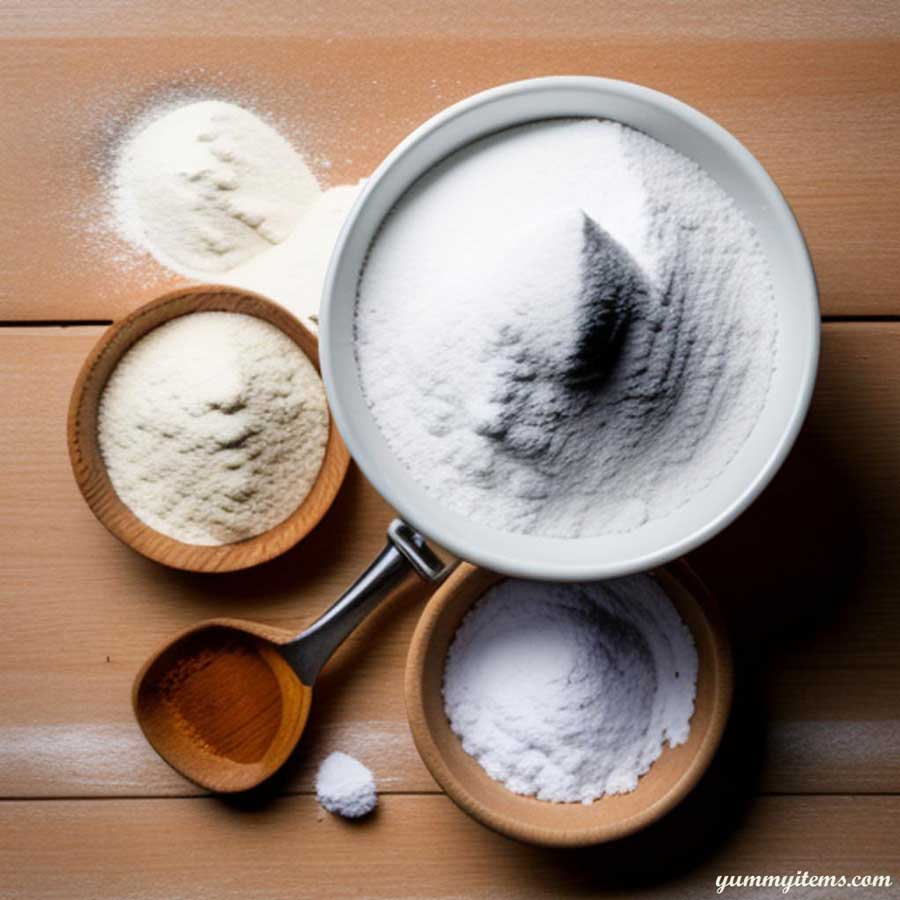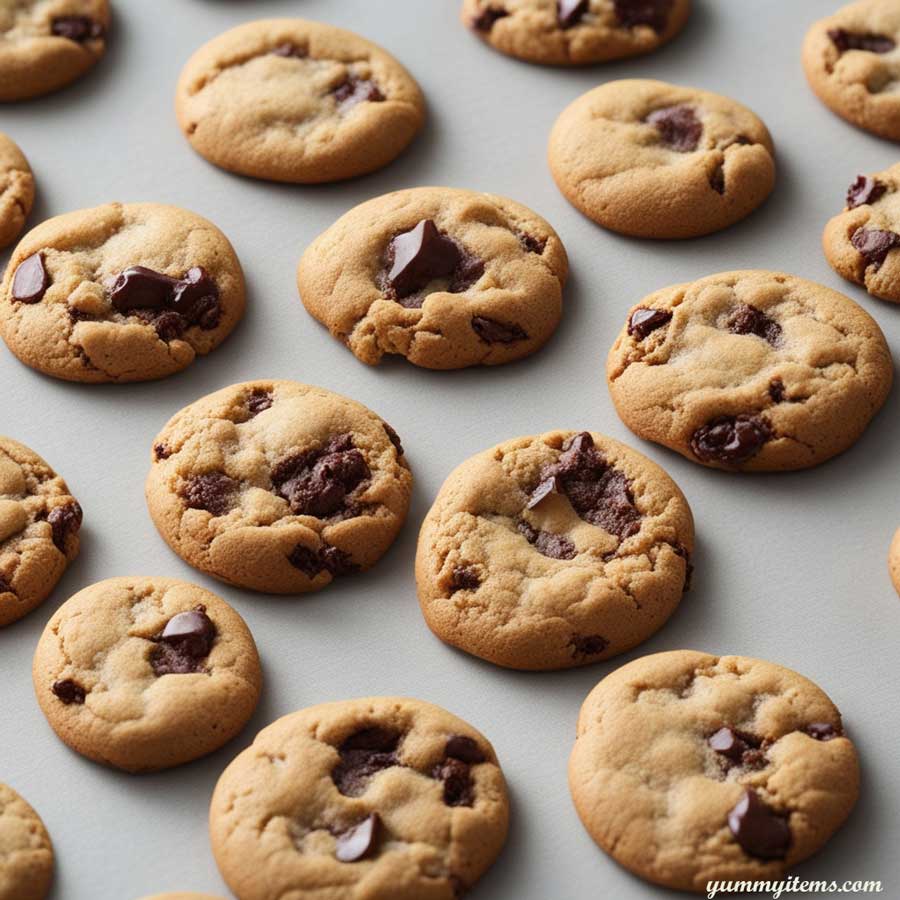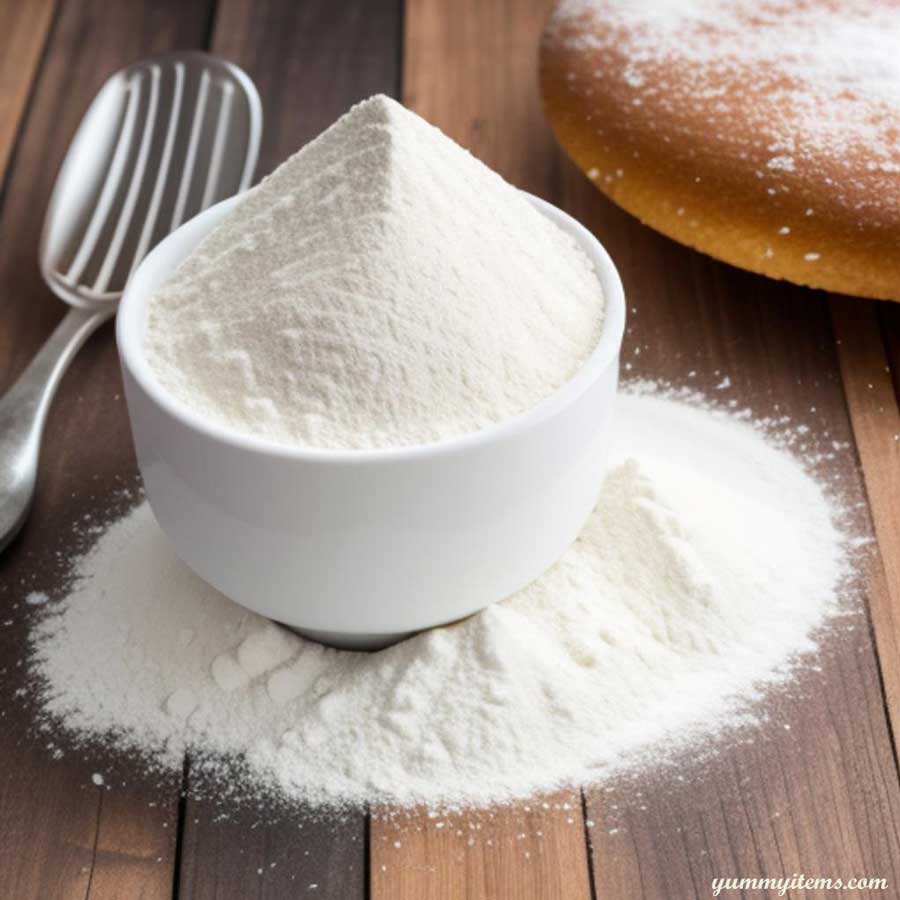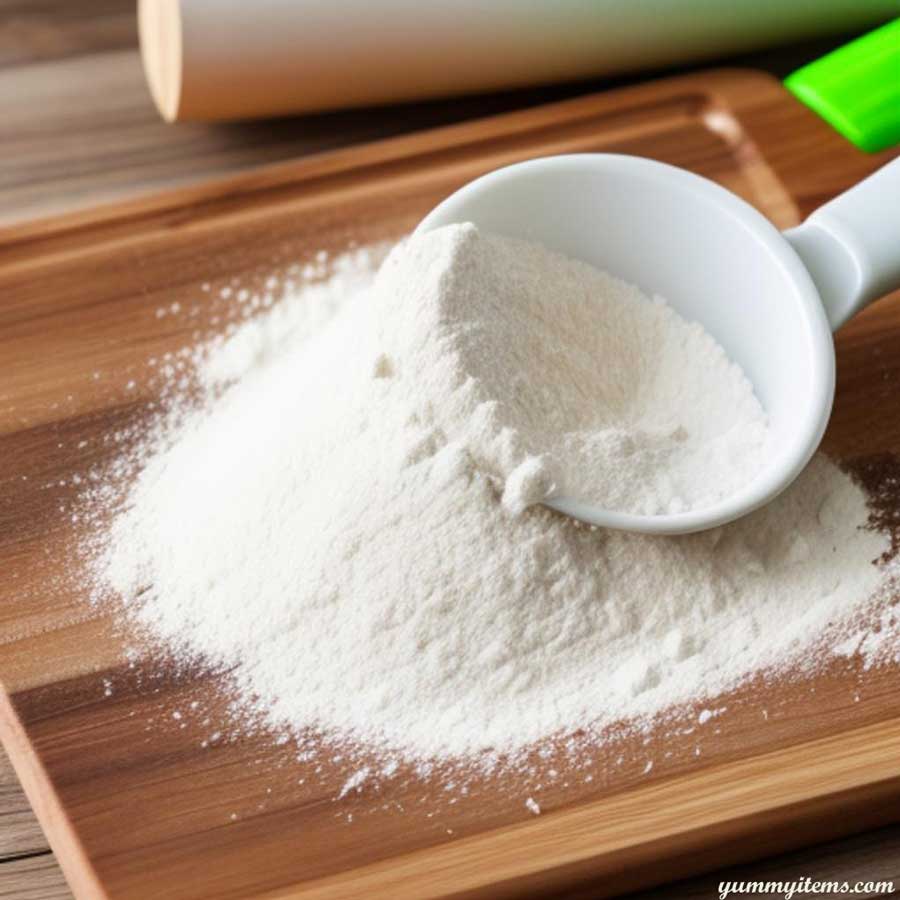Baking is both an art and a science. It requires a delicate balance of ingredients, precise measurements, and the right chemical reactions to achieve the perfect rise and texture in your baked goods. One crucial ingredient that plays a pivotal role in baking is leavening agents. Baking powder and baking soda are two common leavening agents used in countless recipes. However, what do you do when you run out of one and need a quick substitute? In this comprehensive guide, we’ll explore the world of baking powder substitutes, with a special focus on using baking soda. We’ll cover topics ranging from substituting baking soda for baking powder to precise measurements and handy baking soda conversion charts. Let’s dive into the world of leavening agents in baking!

Understanding the Role of Baking Powder and Baking Soda
Before we delve into the world of substitutes, let’s understand the unique roles that baking powder and baking soda play in baking.
Baking Powder: Baking powder is a chemical leavening agent that contains an acid (usually cream of tartar) and an alkaline (typically baking soda). When combined with wet ingredients in a recipe and exposed to heat, baking powder produces carbon dioxide gas. This gas forms tiny bubbles in the batter, causing it to rise and giving your baked goods a light and airy texture.
Baking Soda: Baking soda, or sodium bicarbonate, is an alkaline compound. It requires an acid and moisture to activate it. When mixed with an acid (like buttermilk or lemon juice) and moisture, baking soda reacts to release carbon dioxide gas, which causes the batter to expand and rise.
Now that we have a basic understanding of these two leavening agents, let’s explore the various scenarios in which you might need to substitute baking powder with baking soda or vice versa.
Baking Powder Substitute: Baking Soda for Baking Powder
When to Use Baking Soda as a Substitute for Baking Powder
There are times when you find yourself out of baking powder but still want to continue with your baking project. You can substitute baking soda for baking powder, but it’s essential to understand the right proportions and make the necessary adjustments to your recipe. Generally, you can use baking soda as a substitute for baking powder when:
- You have an acidic ingredient in your recipe: Baking soda requires an acidic component to activate, so make sure your recipe contains ingredients like yogurt, buttermilk, lemon juice, or vinegar.
- You use a 1:3 ratio: For every 1 teaspoon of baking powder required, use 1/3 teaspoon of baking soda.
- You’re mindful of the sodium: Baking soda has a saltier taste than baking powder, so consider reducing the salt in your recipe when substituting.
Let’s look at a quick example of how to substitute baking soda for baking powder.
Baking Powder Substitute: Baking Soda for Baking Soda
Imagine you’re making a classic pancake recipe that calls for 1 teaspoon of baking powder, but you’ve run out. You can use the 1:3 ratio mentioned earlier. Instead of 1 teaspoon of baking powder, use 1/3 teaspoon of baking soda.
Ingredients:
- 1 cup all-purpose flour
- 2 tablespoons sugar
- 1/2 teaspoon salt
- 1 cup milk
- 1 large egg
- 1/3 teaspoon baking soda (substitute for 1 teaspoon baking powder)
Instructions:
- In a mixing bowl, combine the flour, sugar, and salt.
- In a separate bowl, whisk together the milk and egg.
- Gradually add the wet ingredients to the dry ingredients, stirring until just combined.
- Stir in 1/3 teaspoon of baking soda.
- Cook the pancakes on a preheated griddle or skillet until golden brown.
By following this substitution, you can still achieve the desired rise and texture in your pancakes, even when you’re out of baking powder.

Baking Powder Substitute: Baking Soda for Cookies
Baking soda can also be used as a substitute for baking powder in cookie recipes. Cookies are beloved for their chewy or crispy textures, and the leavening agent plays a crucial role in achieving the desired outcome.
Tips for Substituting Baking Soda in Cookies
- Use brown sugar: When substituting baking soda for baking powder, consider using brown sugar. The acidity in brown sugar can help activate the baking soda, contributing to the cookie’s texture.
- Add an acid: If your cookie recipe doesn’t contain an acidic ingredient, consider adding a small amount of lemon juice or vinegar to activate the baking soda.
- Use the 1:3 ratio: Just like in other recipes, for every 1 teaspoon of baking powder required, use 1/3 teaspoon of baking soda.
Here’s a basic chocolate chip cookie recipe that you can modify to substitute baking soda for baking powder:
Ingredients:
- 2 1/4 cups all-purpose flour
- 1/2 teaspoon salt
- 1 cup unsalted butter, room temperature
- 3/4 cup granulated sugar
- 3/4 cup brown sugar
- 1 teaspoon vanilla extract
- 2 large eggs
- 1/3 teaspoon baking soda (substitute for 1 teaspoon baking powder)
- 2 cups chocolate chips
Instructions:
- Preheat your oven to 350°F (175°C) and line a baking sheet with parchment paper.
- In a bowl, whisk together the flour and salt.
- In a separate bowl, cream together the butter, granulated sugar, brown sugar, and vanilla extract until smooth.
- Beat in the eggs one at a time.
- Gradually mix in the dry ingredients.
- Stir in the chocolate chips.
- Add 1/3 teaspoon of baking soda (substitute for 1 teaspoon baking powder) and mix well.
- Drop cookie dough onto the prepared baking sheet by rounded tablespoons.
- Bake in the preheated oven for 10-12 minutes or until the edges are golden brown.
By following these adjustments, you can still enjoy delicious cookies, even if you’re missing baking powder in your kitchen.

Baking Soda to Baking Powder Conversion
Understanding the conversion from baking soda to baking powder is essential for seamless substitution in your recipes. Here’s a simple conversion chart that you can refer to:
- 1 teaspoon of baking powder = 1/3 teaspoon of baking soda + 1/2 teaspoon of cream of tartar (for the acidic component)
- 1 tablespoon of baking powder = 1 teaspoon of baking soda + 1 1/2 teaspoons of cream of tartar
- 2 tablespoons of baking powder = 2 teaspoons of baking soda + 3 teaspoons of cream of tartar
It’s important to note that in recipes where acidity is not provided by other ingredients, you may want to consider adding an acidic element, like buttermilk or yogurt, to ensure the baking soda activates properly.
Baking Soda Substitute
In some cases, you might be out of both baking powder and baking soda. Fear not; there are alternative leavening agents you can use as substitutes. Here are a few options:
1. Yeast: Yeast is a natural leavening agent commonly used in bread recipes. If you’re making bread or other yeast-based baked goods, it can be an effective substitute.
2. Whipped Egg Whites: Whipping egg whites to stiff peaks and gently folding them into your batter can provide a leavening effect in recipes like soufflés and certain cakes.
3. Self-Rising Flour: Self-rising flour contains both flour and leavening agents. If your recipe calls for all-purpose flour, you can substitute self-rising flour. However, adjust the salt in your recipe, as self-rising flour contains salt.
Baking Soda to Baking Powder Calculator
If you’re looking for a convenient way to calculate the substitution of baking soda for baking powder in your recipes, you can use the following calculator:
Baking Soda to Baking Powder Calculator:
- Recipe calls for (teaspoons) of baking powder:
- Substitute with (teaspoons) of baking soda:
Click “Calculate” to determine the adjusted amount of baking soda for your recipe.
This calculator will help you easily determine the right amount of baking soda to use when you need to substitute it for baking powder. It ensures that your baked goods maintain their intended texture and taste.
Conclusion
In the world of baking, flexibility and adaptability are key to overcoming unexpected challenges in the kitchen. When you run out of baking powder, understanding how to substitute with baking soda can save the day. By following the 1:3 ratio and making the necessary adjustments to acidity, you can achieve delicious baked goods with the desired rise and texture.
So, whether you’re whipping up a batch of pancakes, baking a tray of cookies, or tackling a more complex baking project, remember that with the right knowledge and a little creativity, you can confidently substitute baking soda for baking powder and continue to enjoy your culinary adventures. Happy baking!



